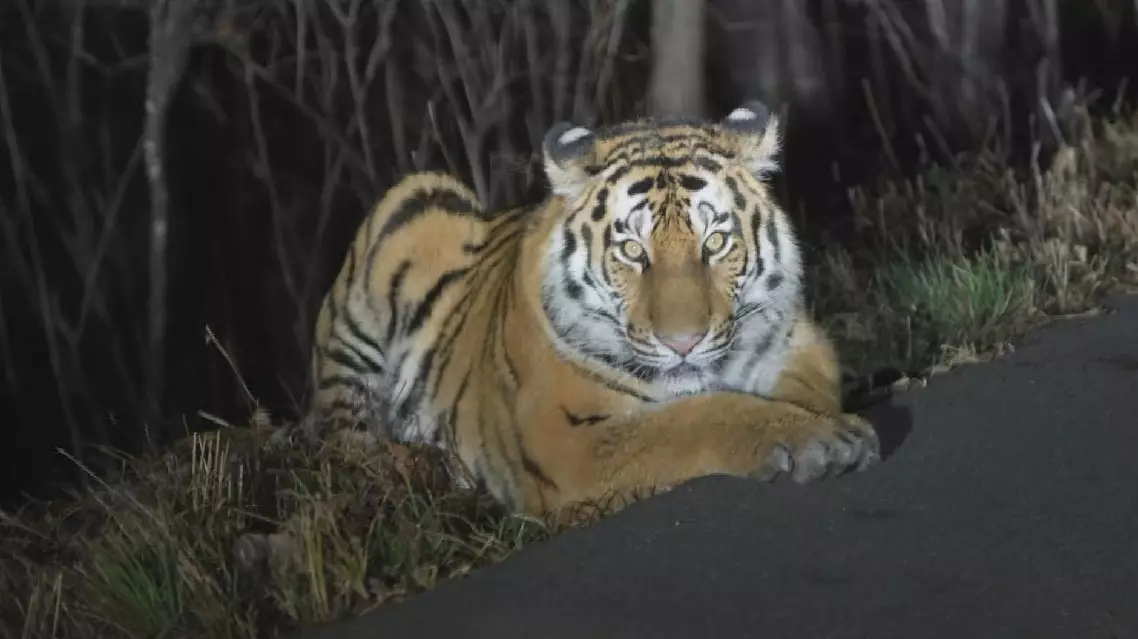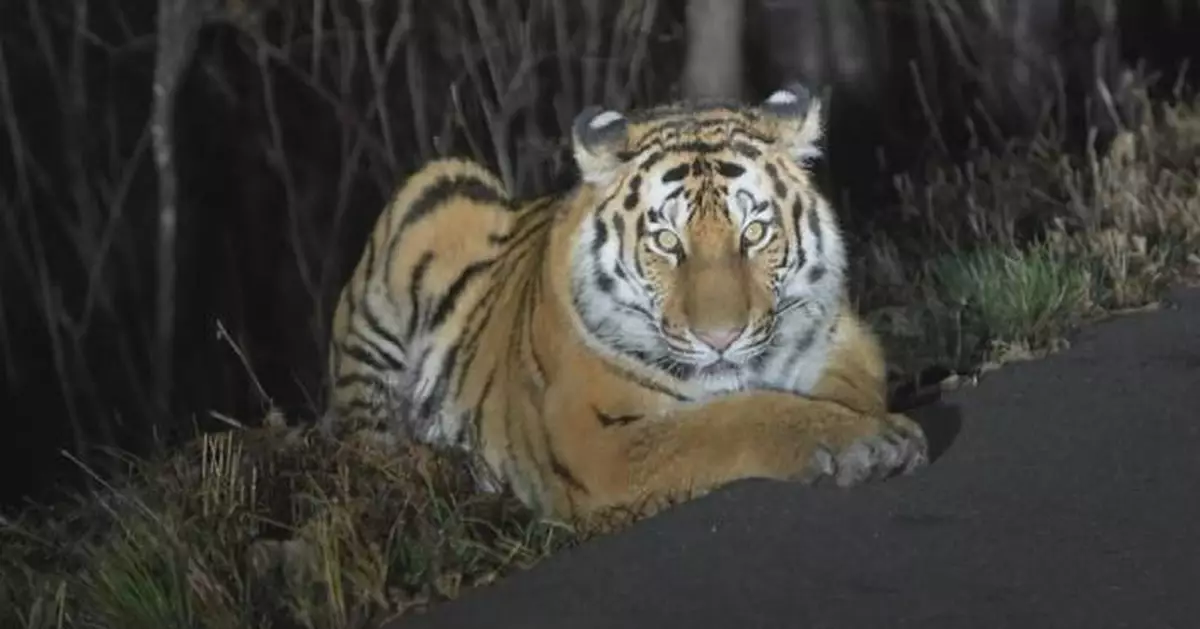Hunchun City, home to a thriving population of wild Siberian tigers and Amur leopards in northeast China's Jilin Province, has been developing protective measures to ensure the safety of both wildlife and rural residents.
In recent years, large cats in the city's Northeast Tiger and Leopard National Park Administration have been observed inhabiting wider ranges within the park, according to Liu Linbo, director of the park's Hunchun branch.
While the success of preservation efforts is cause for celebration, it also presents new challenges for wildlife authorities as these predators begin to wander into areas that put them at risk of encounters with local residents. Liu said that the park is steadily advancing its initiative to isolate wildlife habitats from human settlements.
"In the long term, the coexistence of humans and tigers should be an inevitable trend. Looking at the entire area of Hunchun, the total activity area of tigers and leopards is over 3,300 square kilometers. Among this, the area where they can meet the villagers is nearly 1,000 square kilometers. Within this vast area, there are 29 natural villages where approximately 10,000 people reside. Therefore, if we want to avoid conflicts between humans and tigers, the best approach should be to comprehensively isolate the park from the production and living areas of villagers. This is the most effective way to ensure protection," he explained.
The official added that cutting-edge technologies used in the park are providing creative solutions to reduce the risk of encounters between humans and large cats.
Through an integrated intelligent monitoring system that can send back real-time videos, people living in the park will be alerted when wild animals are close to their villages or farmlands.
"In the over 3,300 square kilometers of the area under the jurisdiction of the Hunchun Branch, we have installed approximately 7,000 monitoring systems. Thus, it can effectively prevent the issue of tigers descending from the mountains. In particular, Hunchun City has established a four-level joint defense and early warning mechanism consisting of the protection bureau, the management and protection center, townships, and villages. In such circumstances, when tigers or leopards appear within three kilometers of a village, the early warning signals can be promptly transmitted to the village, ensuring the personal safety of the villagers," Liu said.
As one of the first five national parks announced in 2021, the Northeast China Tiger and Leopard National Park spans an area of over 1.4 million hectares in the provinces of Jilin and Heilongjiang.
Lying in the heart of Asia's temperate conifer and broad-leaved mixed forest ecosystem, the national park is rich in temperate forest plant species like oak, beech and pine. The vast region provides a rich biodiversity environment for the species here, such as Siberian tigers and Amur leopards.

Chinese wildlife park near farmland strives to ensure peaceful co-existence of humans, large cats





















































